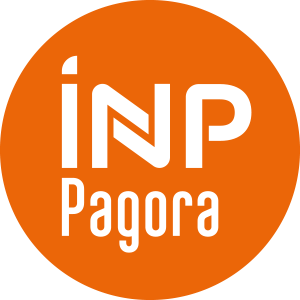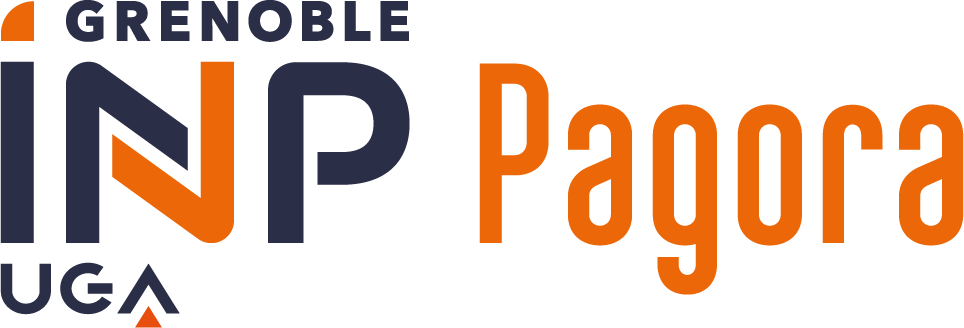Number of hours
- Lectures 0.25
- Projects -
- Tutorials 3.0
- Internship -
- Laboratory works 17.5
ECTS
ECTS 43.0
Goal(s)
Learning outcomes :
- Participate in the design and implementation of a scientific study including experiments, results and analyses to provide answers to a customer request (teacher, researcher, industrialist)
- Collaborate in the writing and presentation of a collective scientific report
Jean-Francis BLOCH
Content(s)
The 1st year scientific project is carried out in a group of at least 6 students. It is an integral part of the training for up to 28 hours spread over 7 sessions of 4 hours. It is proposed by a client (teacher, researcher, industrialist) and is supervised by a tutor (teacher, researcher).
The main objectives of this teaching are:
- Carrying out a practical study (possibly combined with a theoretical study) to implement some of the knowledge already acquired;
- Initiation to project management (initiative, autonomy in the management and organisation of working time, etc.);
- Implementation of all stages of a research project: bibliography, development and implementation, interpretation of results, writing, and oral feedback.
The themes remain in the field of paper processes, printing, processing and bio-materials, such as:
-Analysis and characterization of materials: chemistry, physics, microscopy, rheology,...
-Process engineering: pulp manufacturing, paper engineering, printing, processing...
-Computer science and applied calculations.
- Concept on project management
- Bibliographic research methods
Evaluation : Description of evaluation conditions in the ‘Evaluation’ field (Oral: 12min)
The scientific project is evaluated according to three criteria:
1. Written report
The scientific project report, written by the group, must comply with the following instructions:
-20 pages maximum without annexes;
-character font of the calibrated type in size 11, 1.5 line spacing;
-appendices (value tables, technical documentation of instrumentation, project tracking sheet, etc.) not included in the pages;
-plan to follow:
- introduction (presentation of the context, the state of the art on the subject, objectives, etc.);
- experimental materials and techniques;
- results obtained ;
- analysis of the results;
- conclusion highlighting strengths and perspectives;
- bibliography ;
- appendices.
-The evaluation of the report includes the following points:
- Structure of the report (Title; Report outline; Introduction; Conclusion; Bibliography)
- Form (Style and spelling; Titles and captions of figures and tables; Quality of appendices)
- Scientific context (Problem analysis; Objective setting; Session planning)
- Scientific and technical content (Description and justification of tests; Description and justification of results; Scientific rigour)
This is a scientific report, any personal formulation should be banned (use of "on" and "we", personal remarks or conclusions).
Note on annexes: the annexes should not contain information necessary for the understanding of the report. Thus, if you comment in detail on a table of values, it should be included in the text and not in the appendix. On the other hand, if you later specify that the comments made are also valid for the other series of measures, without going into more detail, it is more appropriate to include all the other tables in the annex.
This report will be read and corrected once, if necessary, by the teacher supervising the project, before its final return to the client and tutor. A computerized version in PDF format should be sent to the person in charge of this module (celine.martin@pagora.grenoble-inp.fr).
This report will be read and evaluated by the client, the tutor and the EU official.
2. Oral defense
The oral presentation of the project is done in groups on the dates scheduled in the timetable. It should not exceed 12 minutes (followed by 10 minutes of questions). Each student in the group must speak equally during this presentation.
The oral defense will be evaluated individually.
-The evaluation of the oral defense includes the following points: Form of the support; Background of the support; Ease (presentation, pedagogy); Answers to Questions
3. Participation
Participation during the project sessions will be evaluated individually by the tutor supervising the project.
-The evaluation of the participation includes the following points: Organization; Motivation Initiative; "Place" in the group".
The course exists in the following branches:
- Curriculum - Pagora Engineer - Student - Semester 6
Course ID : 3FME3039
Course language(s): 
You can find this course among all other courses.
Environmental security
Une fiche de suivi de projet est à compléter à chaque séance avec le tuteur du projet.
Dans cette fiche, les étudiants ont à répondre à la question suivante :
Existe-t-il des risques spécifiques à la réalisation de ce projet ou ce projet sera-t-il réalisé à proximité d’expériences à risques (entourer la réponse) ? OUI - NON
Si oui, les élèves s’engagent :
- à respecter les consignes de sécurité consignées dans les fiches de suivi de projet et visées par le tuteur.
- à être présent en binôme lors de toutes manipulations.
Tout élève ne respectant pas ces engagements se verra sanctionné de -1 point sur la note globale du projet scientifique. En effet, être capable de travailler en sécurité fait partie des compétences de l’ingénieur.
Par ailleurs, chaque zone de manipulation est sous la responsabilité d'un enseignant référant qui s'assure du respect des consignes de sécurité, des protocoles d'utilisation des appareils, ...
Enseignements de 1e année, ouvrages généraux, articles spécialisés, Internet,...



